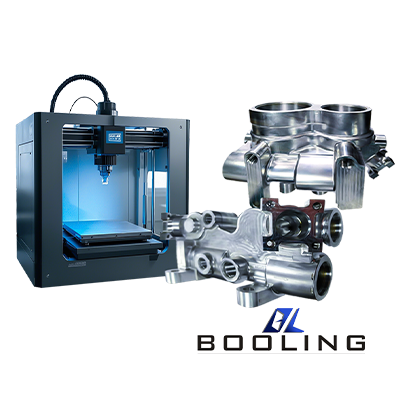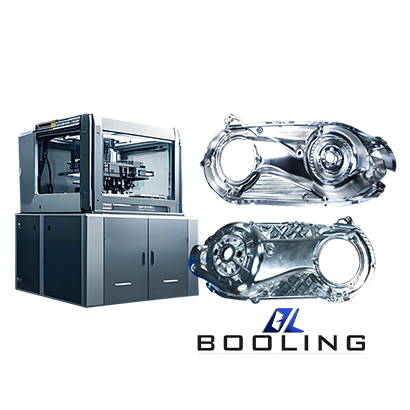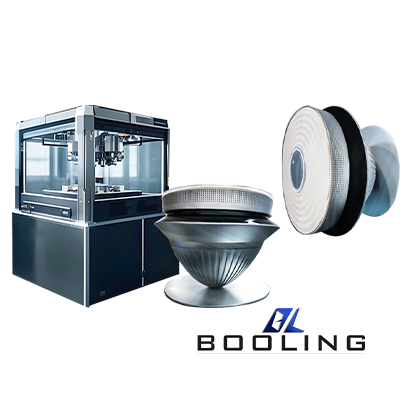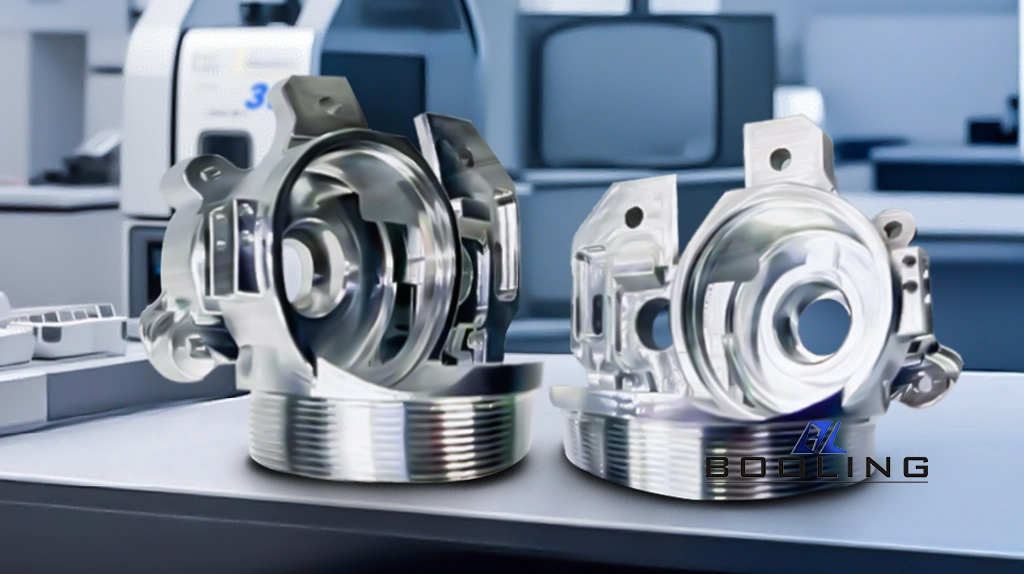Home > 3D Printing Service > Aluminum 3D Printing
Booling’s aluminum 3D printing uses a variety of additive layer-by-layer advanced manufacturing processes, using lasers or electron beams to heat and melt aluminum alloy powder, and accurately controls the layer-by-layer stacking through CAD technology to provide manufacturers with 3D printing solutions for parts. As a lightweight metal material, aluminum 3D products can reduce the weight of products in aerospace, automotive manufacturing, electronics, and medical equipment, and help lightweight design in these industries. Booling uses advanced industrial-grade 3D printing equipment that can achieve millimeter-level aluminum 3D printing accuracy.

Traditional aluminum processing requires casting, cutting, welding, and other processes, which require higher costs and longer production cycles. Booling aluminum 3D printing technology uses 3D printers to achieve integrated molding without the need for molds and other tools, providing high-quality rapid prototyping services for automotive parts manufacturers in South Korea, Argentina, Brazil, Italy, Germany, Canada, and other countries.
-
Rapid Prototyping
-
Weight Reduction
- Easy to Operate
Aluminum 3D Printing Capabilities
Aluminum 3D printing technology is sustainable and widely applicable, meeting personalized customization needs, achieving design flexibility, and manufacturing complex structures.
·
US
Metric
Aluminum
16.5in. x 16.5in. x 17.7 in.
420mm x420mm x450mm
*Aluminum 3D printing is mainly used in the production of decorative products, small tools, and small workpieces.
Aluminum 3D Printing Material
Booling provides AlSi12, AlSi10Mg, and some high-strength aluminum alloy powders for aluminum 3D printing, which can replace traditional heavy metals for lightweight production. Because of the low density of aluminum alloy, it has good corrosion resistance and high strength, so this material is more often designed and used in high-performance parts in the automotive industry and aviation fields.
Material
- Aluminum
The Advantages of Aluminum 3D Printing
Aluminum 3D printing technology can achieve complex shape design, making it an ideal choice for processing various customized products.
- Aluminum 3D printing technology has design freedom and can create complex geometric shapes and designs
- Realize lightweight production and the production of products with lattice or honeycomb structures inside without affecting the overall strength
- Parts or product components can be customized according to requirements
- Save more materials and reduce production costs than traditional manufacturing methods
- Realize rapid prototyping, speed up updates and iterations, and help manufacturers shorten the time to market for new products

Application of Aluminum 3D Printing
Industries such as automotive, aerospace, and transportation have begun to adopt aluminum 3D printing technology to achieve customized production of lightweight components.

Guidelines for Aluminum 3D Printing
Booling provides customized aluminum 3D printing services and can communicate with engineers one-on-one to achieve precision crafting of every detail.
Aluminum 3D printing involves using metal materials to build three-dimensional objects layer by layer. The product is corrosion-resistant and has a wide range of uses. It is often used in model manufacturing in the mold manufacturing industry. Booling engineers have solved aluminum 3D printing problems from different countries such as Mexico, Russia, and the United States through customized solution designs.

Aluminum 3D Printing Technology
Booling provides mainstream aluminum 3D printing technologies on the market, such as powder bed fusion, directed energy deposition, and binder jetting.
- Powder bed fusion (PBF)
This is the most commonly used method in aluminum 3D printing, which selectively melts and fuses aluminum powder layers with the help of high-energy sources (such as lasers or electron beams). FBF technologies mainly include:
- Selective laser melting (SLM)
High-power lasers selectively melt aluminum powder particles in the powder bed, and build up the required parts layer by layer.
- Electron beam melting (EBM)
Using electron beams instead of lasers as energy sources, selectively melt aluminum powder particles in a vacuum environment to produce parts with excellent mechanical properties.
- Directed energy deposition (DED)
Engineers use a focused energy source to melt aluminum powder or aluminum wire, deposit it on the substrate, and build parts layer by layer. This technology is suitable for repairing existing components or adding new functions.
- Binder jetting
This is an additive manufacturing process that bonds aluminum powder layer by layer by spraying adhesives to form the required three-dimensional parts. Compared with PBF technology, this technology has a faster molding speed.
Application of Aluminum 3D Printing
Aluminum has the characteristics of lightweight, high strength, and corrosion resistance. Combined with advanced 3D printing technology, it has been widely used in the automotive, aerospace, industrial, medical and other industries.
- Automobile
- Prototyping and design verification: Automobile parts are sophisticated and complex, and aluminum 3D printing technology can be used for rapid prototyping, timely product verification and optimization, and accelerated development cycles
- Part customization: Aluminum 3D printed parts can directly produce customized components and parts for the automotive aftermarket and manufacturers, such as various interior and exterior parts and internal structural parts, etc.
- Aerospace
- Structural parts: Using aluminum 3D printing technology to produce brackets, hinges, and reinforcements for aircraft and spacecraft can reduce weight while maintaining high strength and durability
- Engine parts: 3D printing is suitable for the production of complex structural parts, such as fuel nozzles, turbine blades, etc., to achieve structural optimization and lightweight production
- Industrial manufacturing
- Prototype: Booling can use 3D printing for rapid prototyping, which is used for design verification and feasibility evaluation of industrial models, shortening delivery time
- Part customization: It can be used to produce industrial parts and components for end-use
- Medical
- Aluminum 3D printing: it has been widely used in the dental field to produce dental restorations such as crowns, bridges, and denture frameworks, with precision in design and processing. Booling can provide customized 3D printing services for orthopedic implants, such as bone plates, screws, etc., tailored to the individual structure of the patient.
